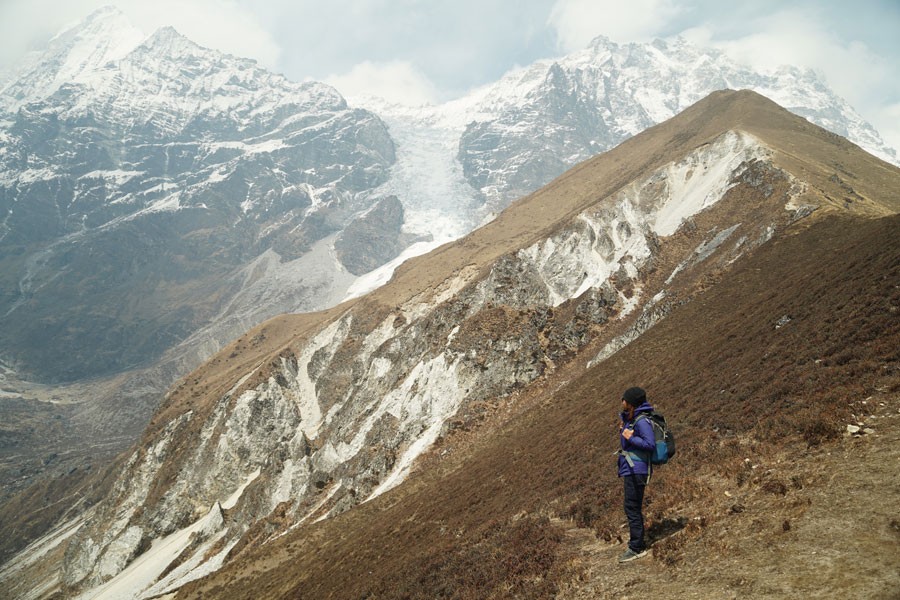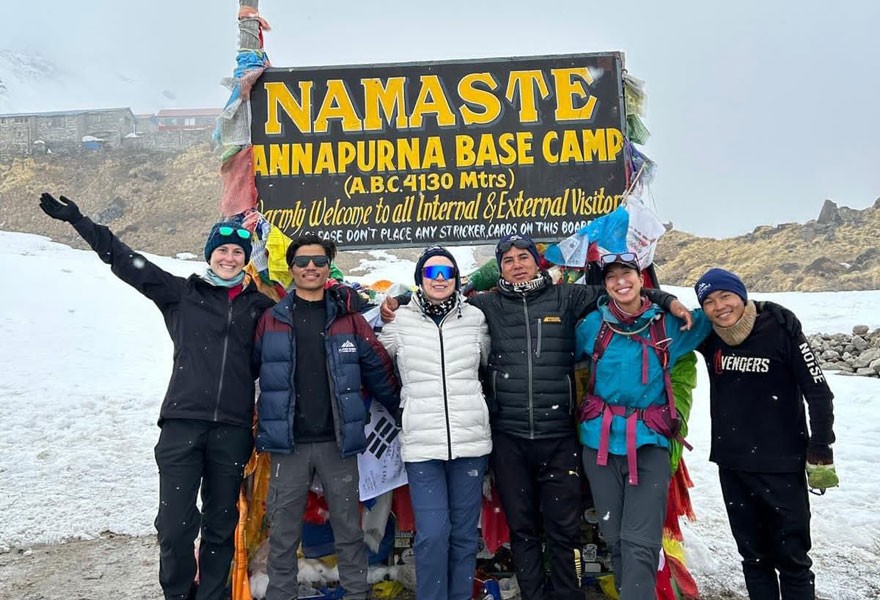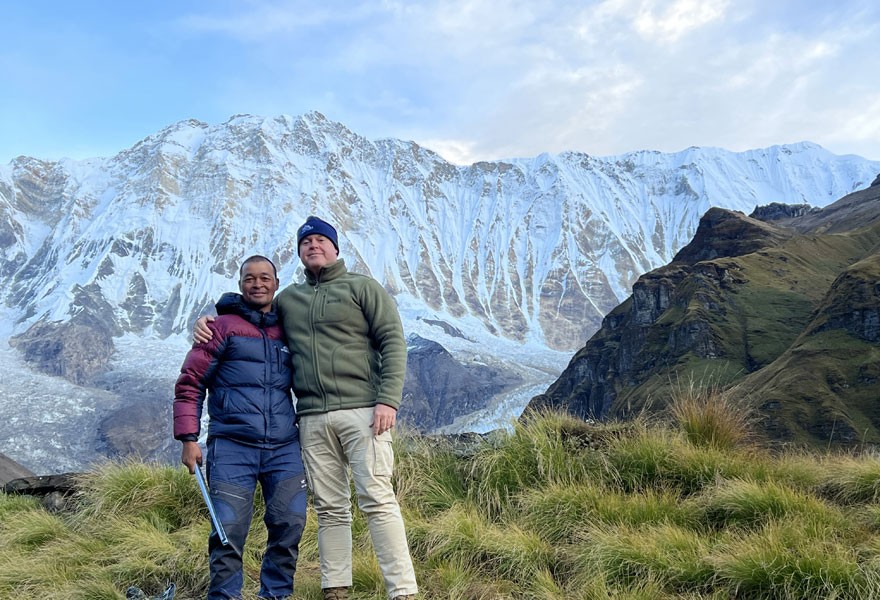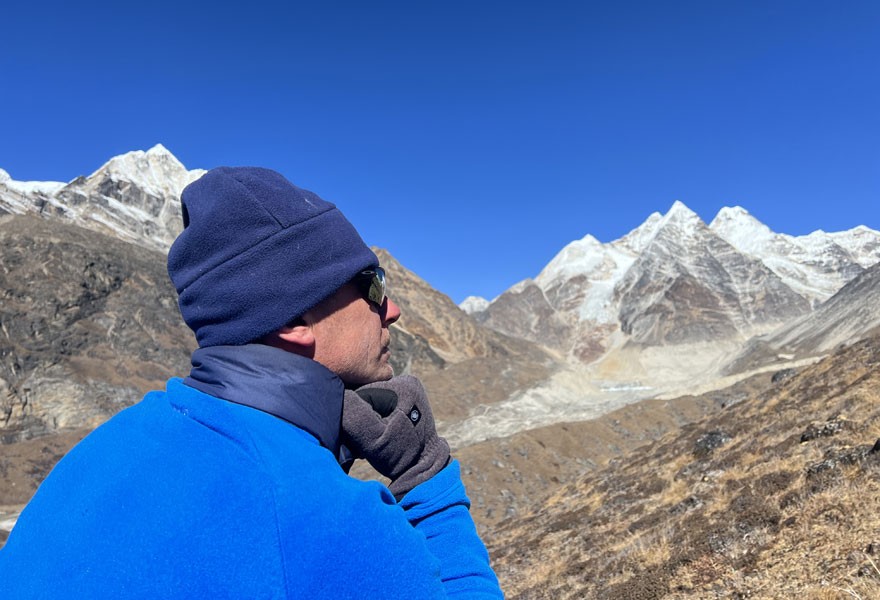
Trekking in Nepal
By Alpine

The Annapurna Base Camp Trek is undoubtedly one of the most popular trekking destinations in Nepal. It is easily accessible and can be completed in as little as a week. Similarly, the Langtang Valley Trek is another destination that can give ABC Trek a run for its money.
Both destinations are beautiful in their own right and offer unique experiences that are exclusive to them. But in some ways, the Langtang Valley Trek and the Annapurna Base Camp Trek are similar to each other.
So, if you are looking for a trekking destination that can be completed in a short amount of time, then both the Annapurna Base Camp Trek and the Langtang Valley Trek check the box.
However, having time to trek on both treks in one visit is not possible for people who only have less than ten days of break. There are multiple things to take into account before choosing the perfect trekking destination for you, and in this blog, we will relay all the information that is required for you to make that decision.
Langtang Valley is located in the north-central region of Nepal, while Annapurna Base Camp is located in the north-western part. Langtang Valley Trek falls within the Langtang National Park, which is the first Himalayan National Park in Nepal.
The national park is spread across three districts: Rasuwa, Nuwakot, and Sindupalchowk, but the Langtang Valley trekking trail only extends to Rasiwa district.

Annapurna Base Camp is part of the Annapurna Conservation Area, which stretches across Manang, Mustang, Kaski, Myagdi, and Lamjung Districts. The base camp, however, only falls in Kaski district. Both trekking destinations are part of protected areas of Nepal that practice ecotourism, which goes hand in hand with the protection and conservation of nature and natural resources.
To get to Langtang Valley, you will first need to get to Syabrubesi, which is the starting point of the trek. You will have the option of taking a local bus or a private jeep and unlike Annapurna, you won’t get a shared jeep.
The local bus costs $12 per person, while booking a private jeep costs $190 per jeep per way. It takes 6–7 hours to reach Syabrubesi from Kathmandu.
Meanwhile, you have multiple transportation options for the Annapurna Base Camp Trek. You can take a local bus, a tourist bus, a local microbus, a private car or jeep, and a flight to Pokhara.
Pokhara is the gateway to the Annapurna region, of which ABC Trek is a part. Once you reach Pokhara, you will have to take another jeep to Jhinu Danda.
The flight to Pokhara takes about 30 minutes, while by road, it can take anywhere from 7 to 8 hours, depending on the road condition and type of vehicle. Then, from Pokhara, it is another 3–4 hour drive to Jhinu Danda, from where your trek officially begins.
|
Area |
Route |
Flight Cost |
Local/Tourist Bus/Sharing Jeep Cost |
Private Jeep Cost/Jeep |
|
Langtang |
Kathmandu-Syabrubesi |
- |
$12 |
$190 |
|
ABC |
Kathmandu-Pokhara |
$106 |
$15 |
$150 |
|
Pokhara-Jhinu Danda |
- |
- |
$80 |
Langtang Valley Trek has an approximate distance of 77 kilometers, or 48 miles, including the distance of Kyanjin Ri. The total distance of the Annapurna Base Camp Trek is approximately 110 kilometers or 68 miles. Comparatively speaking, Annapurna Base Camp has more distance than Langtang Valley but both treks can be completed within the same number of days.
Objectively speaking, both trekking destinations are considered easy to moderate on a difficulty scale. It would not be right to say that it is as easy as a walk in the park because it definitely requires a good amount of physical and mental strength and will leave you out of breath on many occasions.
Both the Langtang Valley Trek and the Annapurna Base Camp Trek are suitable for people who are just beginning to explore the world of high-altitude trekking.

The trail of the Langtang Valley Trek is filled with up-and-downhill paths that are accompanied by the Langtang River. The first two days of the trek have a more uphill trail, which can be a bit difficult.
The highest point of the trek is Kyanjin Ri, at an elevation of 4773 meters above sea level, which is a peak many trekkers climb for the wide-angle view of the Langtang Valley.
Another peak you can climb during the Langtang Trek is the Tsergo RI, with an elevation of 5033 meters. Depending on your itinerary choice, either of these peaks can be the maximum elevation you reach during the trek.
Whereas, the Annapurna Base Camp Trek has about the same amount of uphill and downhill trails. One of the things that makes the ABC trek a bit more challenging than the Langtang is the stairs.
You will be trekking up and down the stoned stairs throughout the entire trek, and you will definitely feel it on your legs. The highest point of the ABC trek is the base camp itself, at an altitude of 4,130 meters. And unlike Langtang, there are no peaks to climb in the surrounding area.
In comparison to the Everest Base Camp Trek, both treks are considerably easier. However, one does have to take precautions regarding altitude sickness and make preparations both physically and mentally.
Both Langtang and Annapurna are considered safe. But there are various factors determining the safety of a destination. Altitude, natural disasters, weather, and encounters with wildlife can definitely pose a threat and danger to trekkers.
While Annapurna Base Camp can be prone to avalanches, Langtang is risky in terms of landslides. And it is very rare, but Himalayan black bears are a possible encounter during the Langtang Valley Trek.
For solo travelers, Annapurna Base Camp can be considered safer, but there are solo trekkers doing the Langtang Trek as well. One of the major concerns for solo trekkers on the Langtang trek is getting lost and losing the trail.
Therefore, it is imperative to have a trekking guide or porter guide for one's own safety. But overall, both destinations are safe for the best trekking experience.
The duration of the trek depends on the route you choose to take, but the standard trekking days for both locations are 6–8 days.
There are multiple routes for the Langtang Valley Trek that can take longer days, such as the Tamang Heritage Trail, the Gosaikunda Lakes Trek, and the Langtang Valley Trek via Sherpa Gaun. One of the most popular routes is the Langtang Valley and Gosaikunda Trek, which takes around 13 days.
One of the most common treks to do in the Annapurna region is the Poonhill-ABC Trek, which can take around 10 days. But now roads are accessible in most places so you can shorten your trek by taking a bus or jeep.
Your trekking experience heavily depends on the type of weather at the place. There are two major seasons that are considered best for trekking: spring and autumn.
Both destinations are at a similar level of elevation, therefore making their temperatures similar as well. Spring and autumn offer the most stable climate, with clear weather making them perfect for trekking in either location.

Summer, however, can be quite risky as it will also be a rainy season and many parts of Nepal will be prone to heavy flooding and landslides. especially the Langtang region, which is very prone to landslides, and trekking during the monsoon can be very challenging and dangerous.
Even in the Annapurna region, the level of rivers rises, so it can be dangerous to trek during the monsoon season.
Contrary to popular belief, winter is actually one of the best times for trekking in the mountains. Apart from the bone-chilling cold, the views you get to witness are the best ones you could ever get.
Here is a table prepared to inform you about the day and night temperatures of both the Langtang Valley Trek and the Annapurna Base Camp Trek.
|
Area |
Route |
Flight Cost |
Local/Tourist Bus/Sharing Jeep Cost |
Private Jeep Cost/Jeep |
|
Langtang |
Kathmandu-Syabrubesi |
- |
$12 |
$190 |
|
ABC |
Kathmandu-Pokhara |
$106 |
$15 |
$150 |
|
Pokhara-Jhinu Danda |
- |
- |
$80 |
The services and comfort in Langtang Valley and Annapurna Base Camp are similar but also somewhat different. Services like laundry, hot showers, wifi, and a diverse food menu are more easily available on the Annapurna Base Camp Trek than in the Langtang Valley. But in recent years, Langtang has also stepped up in terms of facilities, as there is a bank available in Kyanjin village.
However, some parts of Langtang, such as the Lama Hotel, do not have good facilities as they fall under the property of the National Park, so no renovations or alterations to the infrastructure are allowed. Therefore, it is the only place on the entire trail without electricity. However, Kyanjin village is very well equipped with facilities.
While the ABC trek does offer more choice on the menu, it is entirely a vegetarian trail. Due to religious beliefs, meat is not allowed on the trail from Chhomrung. While Langtang used to be a vegetarian trail, it has now been a little lenient on meat, and you can find meat in some hotels. The standard meal in both places is Dhal Bhat, but you can have anything that is available on the menu.
For accommodations, in Langtang, for the most part, you can find hotels and lodges with rooms with attached bathrooms, and the same is true in Annapurna. With the exception of certain places, accommodations only offer a dormitory-style bedroom with shared rooms.
In terms of culture, Langtang and Annapurna are very different from one another. Langtang Valley is predominantly covered by the Tamang ethnic groups, who follow Tibetan Buddhism and Animism. It is a very homogenous society. They have their own unique language, dress, culture, and lifestyle.
During the trek, you can see their distinct way of life and what their everyday life consists of. The ancestors of Langtang are said to have migrated from Tibet long ago, so their roots are engraved in Tibetan practices.
Meanwhile, the Annapurna region is more diverse in culture, where people of different ethnic groups reside in different parts, with Gurung, Magar, and Thakali being some of the prominent ones.
There is a practice of both Buddhism and Hinduism. The influences of different castes and cultures create a collage of vibrant colors and harmonies among the communities.

Both Langtang and Annapurna are surrounded by towering peaks that are both ecological and culturally important. Some of the mountains that you can get a glimpse of during the Langtang Valley Trek are Langtang Lirung (7,227 meters), Ganesh Himal (7,422 meters), Dorje Lakpa (6,966 meters), Langshisa Ri (6,427 meters), Yala Peak (5,520 meters), and Shishapangma (8,013 meters).
During the Langtang Valley Trek, the trail offers a serene view of the lush green forests along with the reverberating Langtang River, with occasional waterfalls making appearances. Apart from summiting Kyanjin Ri and Tsergo Ri, you can also explore the Kyanjin Gompa and the cheese factory.
Meanwhile, the Annapurna Base Camp provides front-row seats to the towering peaks: Annapurna I (8091 meters), II (7937 meters), III (7855 meters), IV (7525 meters), Annapurna South (7,219 meters), Himchuli (6,441 meters), Gangapurna (7,455 meters), Machhapuchhre (6,993 meters), Dhaulagiri (8,167 meters), Tilicho Peak (7,134 meters), and Pisang Peak (6,091 meters).
Trekking to any part of Nepal that is labeled as a protected area requires a permit. As the Langtang Valley Trek is part of the Langtang National Park and the Annapurna Base Camp is part of the Annapurna Conservation Area, getting a permit is very crucial. Apart from the protected area entry permit, you will also be required to pay for the TIMS Card, otherwise known as the Trekker’s Information Management System.
Both destinations are situated in the high-attitude region, where transportation facilities are limited and difficult. This is why you will find it more expensive than the city areas. But in comparison, for food and accommodation, the Langtang Valley Trek is considerably more affordable and budget-friendly than the Annapurna Base Camp Trek.
The cost of both treks depends on the route, number of days, and services you take. But on average, the Langtang Valley Trek costs around $700 per person, while the Annapurna Base Camp Trek costs around $800.
The Nepalese government has established a price for guides and porters. The standard payment for trekking guides is $35 per day, while porters are paid $25 per day. The cost remains constant, regardless of the destination. Tipping, however, is greatly appreciated and totally reliant on your kindness.
In conclusion, both destinations have their own unique features as well as similarities. But when it comes to cost, Annapurna Base Camp is a tad bit more expensive but comes with front-row views of the mighty Annapurna Range, including Annapurna I, which is the tenth-tallest peak in the world. Along with a diverse cultural experience where people of different ethnicities showcase their own cultural uniqueness.
Meanwhile, Langtang provides an immersive experience of a singular Tamang culture heavily influenced by Tibetan Buddhism. You will also be presented with a golden opportunity to summit Kyanjin Ri and Tsergo Ri, as well as visit the cheese factory and Kyanjin Gompa.
So, in the end, it is up to you to decide which destination you would like to visit. But regardless of your choice, Alpine Ramble Treks is here for you to organize the perfect trek for you. We will manage everything and all you need to do is prepare yourself for the trek. Contact us for further details on WhatsApp at +977 9851175531. Check out our exciting Everest Base Camp trek offer for this year as well!